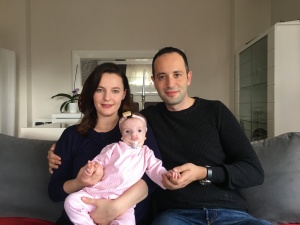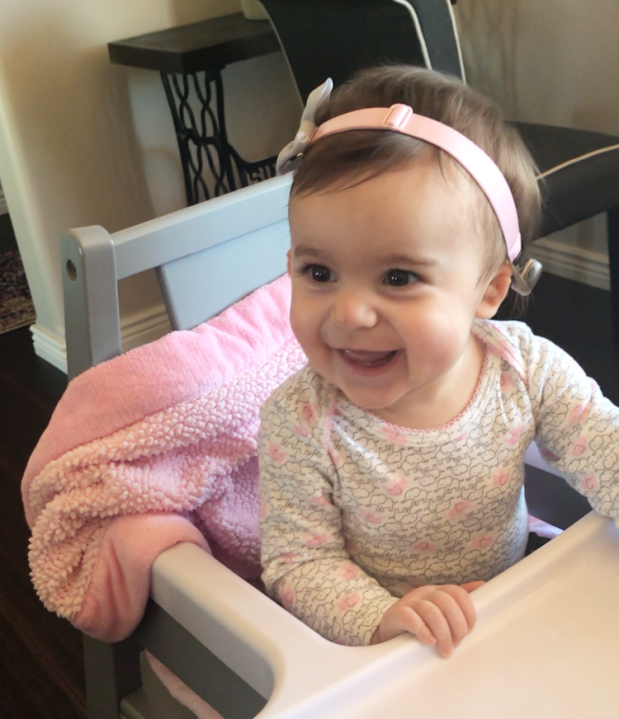Over the last five years, we at The Baha Blog have aimed to bring together people living with hearing loss from all over the world. Whether you or your loved ones live with hearing loss, you’ve wanted to learn more about bone conduction hearing treatments, or you have a Cochlear™ Baha® System yourself, you’ve been along with us for the journey.
To adapt to the changing landscape of online communities over the years, we will no longer be publishing The Baha Blog. But, don’t worry! You can still join your local and regional communities on our other blogs and social media accounts.
In these communities you can connect to Baha recipients, share your stories, get answers to questions about Baha solutions, and stay up to date with new Cochlear products and services specific to your location – all available in many languages.
If you are a Cochlear recipient, you can also sign up for our Cochlear Family programs, support groups and newsletters as offered in your region. Click here for more information.
Follow and join the pages relevant to your area below:
JOIN THE GLOBAL CONVERSATION:
- Cochlear.com
- Instagram: @Cochlear_Global
- Twitter: @CochlearGlobal
- YouTube: Cochlear Global
- LinkedIn: Cochlear
UNITED STATES AND CANADA:
- Hear and Now blog
- Facebook: Cochlear Americas
- Instagram: @CochlearAmericas
- Twitter: @CochlearUS
- YouTube: Cochlear Americas
LATIN AMERICA:
- EscucharAhoraYSiempre.com
- Facebook: Cochlear Latinoamérica
- Instagram: @CochlearLA
- YouTube: Cochlear Latinoamérica
- Brazil
- Facebook: Cochlear Brasil
- Instagram: @CochlearBrasil
- Twitter: @CochlearBrasil
- YouTube: Cochlear Brasil
EUROPE, MIDDLE EAST AND AFRICA:
- Facebook: Cochlear EMEA
- Twitter: @Cochlear_Europe
- YouTube: Cochlear EMEA
- Austria
- Instagram: @CochlearAustria
- Czech Republic
- Facebook: Cochlear Česká republika
- YouTube: Tudásközpont Cochlear
- Denmark
- Facebook: Danaflex Cochlear Partner
- Egypt
- Facebook: Cochlear Egypt
- Germany
- Facebook: Cochlear Deutschland
- Twitter: @CochlearDE
- Hungary
- Facebook: Cochlear – A cochleáris implantátum
- Israel
- Facebook: טרדיס גת שתלי שמיעה
- The Netherlands:
- Facebook: Cochlear Nederland
- Norway
- Facebook: Cochlear Norway
- Poland
- YouTube: implantysluchowe
- Romania
- Facebook: Cochlear Romania
- Instagram: @cochlear.romania
- YouTube: Cochlear Romania
- Russia
- YouTube: Евромакс, Москва
- South Africa
- Facebook: Southern ENT
- Sweden
- Facebook: Cochlear Sweden
- Turkey
- Facebook: Cochlear Türkiye
- Instagram: @cochlearturkiye
- Twitter: @CochlearTurkiye
- UK and Ireland
- Facebook: Cochlear UK & IE
- Twitter: @CochlearUK
- Ukraine
- Facebook: Cochlear Україна
ASIA PACIFIC:
- Twitter: @CochlearAsiaPac
- YouTube: Cochlear Asia Pacific
- Pinterest: Cochlear Asia Pacific
- Australia and New Zealand
- YouTube: Cochlear Australia and New Zealand
- India
- Facebook: Cochlear India
- Instagram: @CochlearIndia
- Twitter: @CochlearIndia
- YouTube: Cochlear India
- Indonesia
- Facebook: Cochlear Indonesia
- Southeast Asia
- Facebook: Cochlear Southeast Asia
- Instagram: @Cochlear.SEA
- Thailand
- Facebook: ประสาทหูเทียม Cochlear Thailand
- Vietnam
- Facebook: Gia đình Cochlear Việt Nam
We want to thank all of you who have followed The Baha Blog, on WordPress, Facebook and Twitter, for your continued dedication to our mission to connect people with hearing loss. We wish you all the best in your personal hearing journeys, and hope to see you again soon in one of our many other online communities.
Please seek advice from your medical practitioner or health professional about treatments for hearing loss. They will be able to advise on a suitable solution for the hearing loss condition. All products should be used only as directed by your medical practitioner or health professional. Not all products are available in all countries. Please contact your local Cochlear representative.
Cochlear, Baha, 科利耳, コクレア, 코클리어, Hear now. And always, SmartSound, the elliptical logo, and marks bearing an ® or ™ symbol, are either trademarks or registered trademarks of Cochlear Bone Anchored Solutions AB or Cochlear Limited (unless otherwise noted).
©Cochlear Bone Anchored Solutions AB 2019. All rights reserved MAR19.













 The Baha SoundArc comes in a range of sizes and features your choice between a variety of coloured tips, where available. You can choose to match your clothing, your hair or your mood. Choose between black, grey or brown tips to discreetly match hair color — or opt instead for green, pink or turquoise tips to add style to an outfit. Watch the first video below to learn how to change the coloured tips.
The Baha SoundArc comes in a range of sizes and features your choice between a variety of coloured tips, where available. You can choose to match your clothing, your hair or your mood. Choose between black, grey or brown tips to discreetly match hair color — or opt instead for green, pink or turquoise tips to add style to an outfit. Watch the first video below to learn how to change the coloured tips.








 The height of the ceiling is important: Just as a taller person needs a high ceiling to be comfortable, a person with a high level of hearing loss needs a high MPO level to hear sounds comfortably.
The height of the ceiling is important: Just as a taller person needs a high ceiling to be comfortable, a person with a high level of hearing loss needs a high MPO level to hear sounds comfortably. The MPO on some devices delivers significantly more power to middle-range frequencies than the lower or higher frequencies important for speech. For these devices, the MPO chart looks more like a house with a very pointed ceiling and short walls. A tall person may stand comfortably in the centre, but they can’t walk over to the window without bumping their head on the ceiling. In these sound processors, at the lower and higher frequencies important for speech, sounds hit the “ceiling” of the sound processor’s power limits, distorting them.
The MPO on some devices delivers significantly more power to middle-range frequencies than the lower or higher frequencies important for speech. For these devices, the MPO chart looks more like a house with a very pointed ceiling and short walls. A tall person may stand comfortably in the centre, but they can’t walk over to the window without bumping their head on the ceiling. In these sound processors, at the lower and higher frequencies important for speech, sounds hit the “ceiling” of the sound processor’s power limits, distorting them. Ideally, a device with a high average MPO allows you to clearly hear sounds across the frequency range – in the same way that a house with a gently sloped ceiling allows you to move around freely inside, all the way to peer out each window without bumping your head.
Ideally, a device with a high average MPO allows you to clearly hear sounds across the frequency range – in the same way that a house with a gently sloped ceiling allows you to move around freely inside, all the way to peer out each window without bumping your head.

You must be logged in to post a comment.